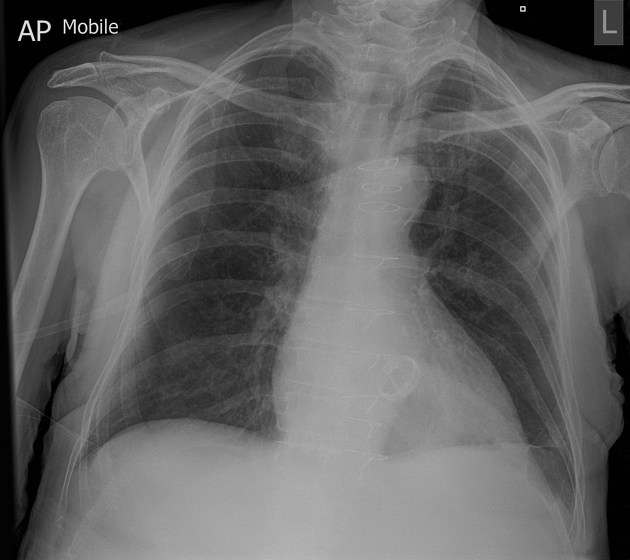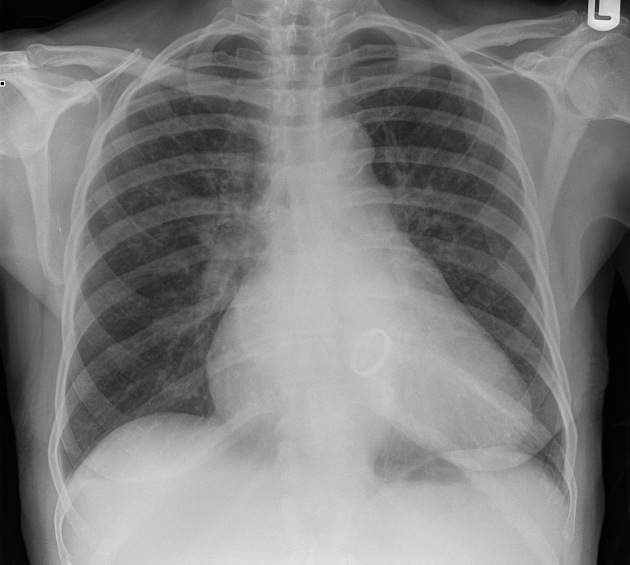Mitral valve replacement refers to the substitution of the mitral valve either by a mechanical valve or bioprosthesis.
On this page:
Indications
Mitral valve replacement has been superseded by mitral valve repair in most situations of mitral valve dysfunction 1-3. Further existing indications of operative mitral valve replacement include the following 1-3:
irreparable mitral valve pathology
-
expected poor durability outcomes with mitral valve repair
significant mitral annular calcification
severe dystrophic, inflammatory or infective leaflet alterations
subvalvular thickening or fusion
progressive cardiomyopathy with mitral annular dilation
low comorbidity
rheumatic valve disease with mitral stenosis (in situations where percutaneous mitral commissurotomy is contraindicated or unavailable)
Indications regarding mechanical and bioprosthetic valves are subject to the desired impact on cardiac function and the perioperative and long-term risks involved. Generally, mechanical valves are preferred in structural valve failure and younger patients who have no contraindications to long-term anticoagulation or already receive it for another reason 1,2. Bioprosthetic valves are preferred in situations where higher doses of anticoagulation is an issue, in older age groups or when future interventions are considered low risk or after mechanical valve thrombosis despite good anticoagulation 1,2.
Contraindications
Contraindications of mitral valve replacement include the following conditions 1-3:
mitral valvular pathologies suitable to mitral valve repair or transcatheter mitral valve replacement
contraindications to respective therapeutic anticoagulation levels for mechanical valves
Prosthesis design
The following prosthetic mitral valve implants have been in use:
-
mechanical
tilting disc
bi-leaflet disc
cage ball valve (no longer implanted)
-
biological
stented porcine bioprostheses
pericardial bovine prostesis
Procedure
A rough overview of the surgical procedure includes the following steps 1:
median sternotomy or by endoscopic and robotic approaches
cardiopulmonary bypass
transseptal incision via access through the Sondergaard groove or transarterial oblique approach
excision of the native valve and implantation of the prosthesis with preservation or reinforcement of the native subvalvular structures
fixation preferably with non-everting stitches
Complications
Complications of mitral valve replacement include the following 1,2:
left ventricular rupture (annulus, papillary muscles, midventricular zone)
thromboembolism including valve thrombosis (most common)
anticoagulant-related haemorrhage
infective endocarditis (3-6% within the 5 years)
paravalvular leak (rare in about 1.5%) and haemolysis
annular pannus formation with leaflet dysfunction in mechanical valves
structural valve degeneration in bioprosthetic valves
regurgitation
progressive stenosis
Radiographic features
Plain radiograph
In particular mechanical valves might show up on chest x-ray, which might aid in the identification.
Echocardiography
Echocardiography is considered is the imaging modality of choice for follow-up of mitral valve replacement. In the first five years after implantation it is recommended annually for evaluation and detection of the following complications 1:
structural valve degeneration
mitral stenosis with leaflet calcification and stiffening
Radiology report
The radiological report should include a description of the following features:
mitral valve prosthesis and type
-
complications (if present)
structural valve degeneration
mitral regurgitation
mitral stenosis with leaflet calcification and stiffening
paravalvular leak
Outcomes
Perioperative mortality rates of isolated mitral valve replacement are estimated in the 4-7% range. Reported 10-year survival is not significantly different between mechanical and bioprosthesis and in the range between 50% and 60% 1.
Advantages
An advantage of mitral valve replacement is that it is also feasible in complex situations, where mitral valve repair is no longer possible.
Disadvantages
Disadvantages of mitral valve replacement over mitral valve repair include the following 1:
higher operative mortality
replacement-related complications
lower mid and long-term survival








 Unable to process the form. Check for errors and try again.
Unable to process the form. Check for errors and try again.